Filter by
This project is a renovation and replaced AMP Centre
You must be a CTBUH Member to view this resource.
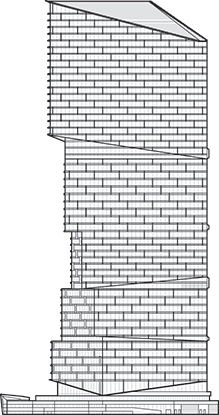
Quay Quarter Tower
Building
Completed
2022
Office
Concrete-Steel Composite
6-Star Green Star, NABERS 5.5 Energy Office targeted
210.4 m / 690 ft
52
3
25
10 m/s
102,000 m² / 1,097,919 ft²
You must be a CTBUH Member to view this resource.
You must be a CTBUH Member to view this resource.
Proposed
Construction Start
Completed
Usually involved in the front end design, with a "typical" condition being that of a leadership role through either Schematic Design or Design Development, and then a monitoring role through the CD and CA phases.
Usually takes on the balance of the architectural effort not executed by the "Design Architect," typically responsible for the construction documents, conforming to local codes, etc. May often be referred to as "Executive," "Associate," or "Local" Architect, however, for consistency CTBUH uses the term "Architect of Record" exclusively.
The Design Engineer is usually involved in the front end design, typically taking the leadership role in the Schematic Design and Design Development, and then a monitoring role through the CD and CA phases.
The Design Engineer is usually involved in the front end design, typically taking the leadership role in the Schematic Design and Design Development, and then a monitoring role through the CD and CA phases.
The main contractor is the supervisory contractor of all construction work on a project, management of sub-contractors and vendors, etc. May be referred to as "Construction Manager," however, for consistency CTBUH uses the term "Main Contractor" exclusively.
Other Consultant refers to other organizations which provided significant consultation services for a building project (e.g. wind consultants, environmental consultants, fire and life safety consultants, etc).
Material Supplier refers to organizations which supplied significant systems/materials for a building project (e.g. elevator suppliers, facade suppliers, etc).
You must be a CTBUH Member to view this resource.
Usually involved in the front end design, with a "typical" condition being that of a leadership role through either Schematic Design or Design Development, and then a monitoring role through the CD and CA phases.
Usually takes on the balance of the architectural effort not executed by the "Design Architect," typically responsible for the construction documents, conforming to local codes, etc. May often be referred to as "Executive," "Associate," or "Local" Architect, however, for consistency CTBUH uses the term "Architect of Record" exclusively.
The Design Engineer is usually involved in the front end design, typically taking the leadership role in the Schematic Design and Design Development, and then a monitoring role through the CD and CA phases.
The Peer Review Engineer traditionally comments on the information produced by another party, and to render second opinions, but not to initiate what the design looks like from the start.
The Design Engineer is usually involved in the front end design, typically taking the leadership role in the Schematic Design and Design Development, and then a monitoring role through the CD and CA phases.
The CTBUH lists a project manager when a specific firm has been commissioned to oversee this aspect of a tall building’s design/construction. When the project management efforts are handled by the developer, main contract, or architect, this field will be omitted.
The main contractor is the supervisory contractor of all construction work on a project, management of sub-contractors and vendors, etc. May be referred to as "Construction Manager," however, for consistency CTBUH uses the term "Main Contractor" exclusively.
Other Consultant refers to other organizations which provided significant consultation services for a building project (e.g. wind consultants, environmental consultants, fire and life safety consultants, etc).
Material Supplier refers to organizations which supplied significant systems/materials for a building project (e.g. elevator suppliers, facade suppliers, etc).
2023 CTBUH Awards
2023 CTBUH Awards
2023 CTBUH Awards
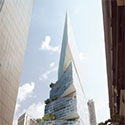
30 October 2017 | Sydney
Central Sydney is changing from a business district, traditionally focused on work, to increasingly become a city lifestyle district that offers a range of experiences....
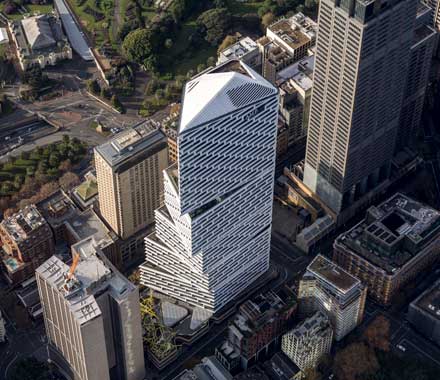
22 December 2023
Fred Holt
Addressing the dual challenges facing contemporary architecture: the imperative to minimize the industry’s carbon footprint and the pursuit of enhanced well-being and collaboration, the transformative...
3XN__Adam__Mørk.png)
03 November 2023
On 18 October, CTBUH announced the winner of its annual award for the 2023 best tall building worldwide as Quay Quarter Tower, in Sydney. Winners...
2023 CTBUH Awards
2023 CTBUH Awards
2023 CTBUH Awards
2023 CTBUH Awards
2023 CTBUH Awards
2023 CTBUH Awards
2023 CTBUH Awards
2023 CTBUH Awards

30 October 2017 | Sydney
Central Sydney is changing from a business district, traditionally focused on work, to increasingly become a city lifestyle district that offers a range of experiences....

30 October 2017 | Sydney
Nowadays people can work anywhere at any time, and the paradigm of workers being housed within the four walls of the traditional workspace is being...

30 October 2017 | Sydney
Kim Nielsen of 3XN is interviewed by Chris Bentley during the 2017 CTBUH Australia Conference.
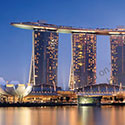
30 October 2017 | Sydney
Quay Quarter Tower (QQT) will create a stunning new building on the Sydney skyline that sets new benchmarks in office tower design globally and creates...
AMP__Capital.jpg)
30 October 2017 | Sydney
Quay Quarter Tower takes a comprehensive approach to sustainability. It starts with urban renewal and continues to a high-performing façade. The focus on both place...
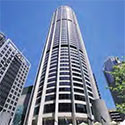
30 October 2017 | Sydney
Tall buildings often take more than they give back, frequently exacerbating local environmental conditions, overshadowing streets and public spaces, creating wind tunnels, and impacting the...

22 December 2023
Fred Holt
Addressing the dual challenges facing contemporary architecture: the imperative to minimize the industry’s carbon footprint and the pursuit of enhanced well-being and collaboration, the transformative...
 3XN_Adam Mørk2.jpg)
30 October 2017
CTBUH 2017 Conference Speakers
The future of humanity on this planet relies on the collective benefits of urban density; reducing both land consumption and the energy needed to construct...
 3XN_Adam Mørk.jpg)
30 October 2017
Kim H. Nielsen, 3XN Architects
The under-design Quay Quarter Tower will create a stunning new building on the Sydney skyline that sets new benchmarks in office tower design globally and...
3XN__Adam__Mørk.png)
03 November 2023
On 18 October, CTBUH announced the winner of its annual award for the 2023 best tall building worldwide as Quay Quarter Tower, in Sydney. Winners...

05 April 2018
AMP Capital has commenced construction on its Quay Quarter Tower at 50 Bridge Street in Sydney after securing a AU$900 million (US$692 million) investment from...
Subscribe below to receive periodic updates from CTBUH on the latest Tall Building and Urban news and CTBUH initiatives, including our monthly newsletter. Fields with a red asterisk (*) next to them are required.
View our privacy policy